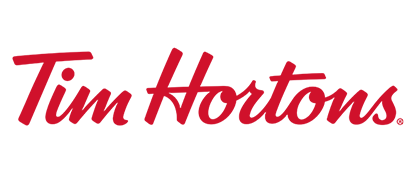Host Canada and defending champion USA will face off against each other on the last day of preliminary-round action.
photo: Marko Ditkun / HHOF-IIHF Images
The niceties are over for the North American teams, and now it’s time to get down to business. Canada and the U.S. will play the final preliminary round game on Thursday afternoon, the winner taking first place in Group A.
As usual, there is precious little separating the two teams at this point. Canada has scored more goals (15-12) but the U.S. has yet to allow a goal in three games (Canada has allowed four). One thing is for certain. There will be no gamesmanship on Thursday. Both coaches will coach to win, and all the players will be out there to win. Last year’s Rivalry Series was dominated by the Americans, but both teams in Calgary are markedly different, so those games mean a lot--or nothing, depending on your point of view.
So as we turn up the volume and get our drinks ready, here’s what to look for in Chapter 29 of the fiercest Women’s Worlds rivalry of them all.
Beginning, Middle, End
What do you make of Canada’s scoring patterns? They have yet to score a goal in the first period, yet have responded by leading all teams with 9 goals in the second and 6 in the third. The Americans are more balanced, having scored 3, 5, 4 goals by period. By the sounds of it, a big U.S. first period would do Canada in, but a tie after the first would tilt the scales in Canada’s favour.
Youth Will Be Served
The U.S. has ten players without previous top-level Women’s Worlds experience and Canada has eight. Both programs are getting young blood in the lineup, confident the players can do the job here but also using the moment as a testing ground for the Olympics in six months’ time. Sarah Fillier has been lights out for Canada, and Grace Zumwinkle has been her doppelganger on the American side. Indeed, Zumwinkle leads all Americans with four points. Canada’s leaders are veterans Natalie Spooner and Melodie Daoust, who are tied for the overall points lead with with Fanni Gasparics (HUN) and Alena Mills (CZE) with five points each.
Special (?) Teams
Well, they haven’t been that special yet, but the teams are so good you know it’s only a matter of time. Canada is a dismal 0-12 on the power play and the Americans just 2-14, numbers totally unworthy of what the players are capable of. On the d-side, Canada has killed 11 of 13 short-handed situations while the U.S. is a perfect 8 for 8. In Canada’s case, the worrisome figure is the 13 times they have been down a skater, far too often. Extra-skater situations will be critical in this game.
No MPP
The U.S. is healthy and will have a full lineup, but Canada will be without captain Marie-Philip Poulin, who is resting after taking a shot to the collarbone/neck area. On the surface, this gives the Americans a clear advantage. But they well know a lost leader can motivate the rest of the players. No matter, Canada is without one of its big weapons.
Physicality
It’s been a bit of an odd tournament so far. Lots of minor penalties called—a whopping 172 in 17 games, but no majors or misconducts—and it has been particularly physical as well. The North Americans are known for liking hard hockey, and if the refs give them a little more leeway, then the body might be a factor in how the game is played.
History Lesson
In 28 previous WW meetings the U.S. has a slight 14-12 edge in wins. But here’s a more interesting psychological stat. The teams have played twice in a Women’s Worlds on nine occasions. Only once has Canada won both games (2007). The Americans have won both four times (2008, 2015, 2016, 2017), including the last three in a row. From this, one would say Canada needs to win today more than the Americans.
Goaltenders
The final line of defence has been great at both ends, but the tandem of Alex Cavallini (two games, two shutouts) and Nicole Hensley (one game, one shutout) has been perfect. Ann-Renee Desbiens has allowed four goals in two games and Emerance Maschmeyer got a shutout in her one appearance (against the Swiss).
As usual, there is precious little separating the two teams at this point. Canada has scored more goals (15-12) but the U.S. has yet to allow a goal in three games (Canada has allowed four). One thing is for certain. There will be no gamesmanship on Thursday. Both coaches will coach to win, and all the players will be out there to win. Last year’s Rivalry Series was dominated by the Americans, but both teams in Calgary are markedly different, so those games mean a lot--or nothing, depending on your point of view.
So as we turn up the volume and get our drinks ready, here’s what to look for in Chapter 29 of the fiercest Women’s Worlds rivalry of them all.
Beginning, Middle, End
What do you make of Canada’s scoring patterns? They have yet to score a goal in the first period, yet have responded by leading all teams with 9 goals in the second and 6 in the third. The Americans are more balanced, having scored 3, 5, 4 goals by period. By the sounds of it, a big U.S. first period would do Canada in, but a tie after the first would tilt the scales in Canada’s favour.
Youth Will Be Served
The U.S. has ten players without previous top-level Women’s Worlds experience and Canada has eight. Both programs are getting young blood in the lineup, confident the players can do the job here but also using the moment as a testing ground for the Olympics in six months’ time. Sarah Fillier has been lights out for Canada, and Grace Zumwinkle has been her doppelganger on the American side. Indeed, Zumwinkle leads all Americans with four points. Canada’s leaders are veterans Natalie Spooner and Melodie Daoust, who are tied for the overall points lead with with Fanni Gasparics (HUN) and Alena Mills (CZE) with five points each.
Special (?) Teams
Well, they haven’t been that special yet, but the teams are so good you know it’s only a matter of time. Canada is a dismal 0-12 on the power play and the Americans just 2-14, numbers totally unworthy of what the players are capable of. On the d-side, Canada has killed 11 of 13 short-handed situations while the U.S. is a perfect 8 for 8. In Canada’s case, the worrisome figure is the 13 times they have been down a skater, far too often. Extra-skater situations will be critical in this game.
No MPP
The U.S. is healthy and will have a full lineup, but Canada will be without captain Marie-Philip Poulin, who is resting after taking a shot to the collarbone/neck area. On the surface, this gives the Americans a clear advantage. But they well know a lost leader can motivate the rest of the players. No matter, Canada is without one of its big weapons.
Physicality
It’s been a bit of an odd tournament so far. Lots of minor penalties called—a whopping 172 in 17 games, but no majors or misconducts—and it has been particularly physical as well. The North Americans are known for liking hard hockey, and if the refs give them a little more leeway, then the body might be a factor in how the game is played.
History Lesson
In 28 previous WW meetings the U.S. has a slight 14-12 edge in wins. But here’s a more interesting psychological stat. The teams have played twice in a Women’s Worlds on nine occasions. Only once has Canada won both games (2007). The Americans have won both four times (2008, 2015, 2016, 2017), including the last three in a row. From this, one would say Canada needs to win today more than the Americans.
Goaltenders
The final line of defence has been great at both ends, but the tandem of Alex Cavallini (two games, two shutouts) and Nicole Hensley (one game, one shutout) has been perfect. Ann-Renee Desbiens has allowed four goals in two games and Emerance Maschmeyer got a shutout in her one appearance (against the Swiss).




